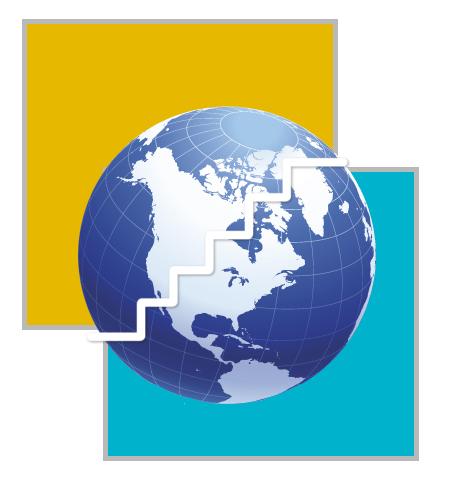MEDIA
When Pakistan's Prime Minister Shaukat Aziz told the media in Delhi that Pakistan was no longer a failed State but was doing nicely, he was neither boasting nor was he trying to pull a fast one on his listeners.
In the post 9/11 months, Pakistan has witnessed a growth that is truly remarkable. In the first place it witnessed an upsurge in home remittance with fiscal 2002-2003 recording a historic high of $ 4.23 billion.
Another contributing factor was the large cash transfers made by the US to Pakistan for the latter's enforced support to the US war against terrorism. Such transfers amounted to over $ 2 billion during 2001-2003. They included two grants of $ 50 million each immediately after Musharraf declared his support to Washington, followed by a further cash grant of $ 600 million in early 2002 and $ 1.2 billion worth of reimbursements till March 2003 for Pakistan's logistics support.
These facts are attested by a newly-released document put together by an organisation known as The Strategic Foresight Group, (SFG) with access to official information from Islamabad.
According to the SFG, the post 9/11 turnaround provided Pakistan with acutely needed fiscal space. Both the attacks on the World Trade Center in New York on 11 September, 2001 and the US war in Afghanistan brought Pakistan into the front-line status with the following results: One, Pakistan's foreign exchange reserves rose above $ 12.6 billion by the end of fiscal 2003-2004, up from a mere $ 1 billion in 1999. Two, exports grew by 20 per cent crossing $ 11 billion for the first time ever, as quota restrictions on Pakistani textiles were waived by the US and the European Union. Three, home remittances from abroad grew by 300 per cent to an amazing $ 4 billion, the highest ever, equivalent to more than five per cent of GDP. Four, inflation was brought down to around four per cent, the Pakistani rupee appreciated by six per cent in the last three years and there was a current account surplus. Five, a debt-scheduling agreement was signed between Pakistan and the Paris Club donors worth $ 12.5 billion, which was nearly one third of the total external debt of the country in 2001. It considerably reduced the annual debt servicing liability. This was again thanks to the influence wielded by the United States. Six, numerous sanctions related to Pakistan's nuclear tests and military coup were set aside, again to Pakistan's advantage. Seven, there was considerable increase in foreign direct investment (FDI) and the Karachi Stock Exchange crossed the psychological 4,000 index mark for the first time ever. And finally, the agriculture sector improved its performance on account of improved rains and water availability.
In the circumstances, the growth for fiscal 2002-2003 increased to 5.1 per cent, the highest annual real growth rate since 1995-1996. These are facts of life that cannot be ignored.
The report of the Strategic Foresight Group lists many other reasons why Pakistan's foreign exchange reserves are so buoyant. For one thing, the appreciation of the Pakistani rupee helped bring back Pakistani deposits held abroad.
Then official scrutiny of deposits of Pakistani immigrants in the United States and Europe frightened many to increase their remittance to their home country. Besides, the Pakistan government came down heavily on the hawala system and that proved most effective in augmenting home remittances.
According to SFG estimates, Pakistanis have at least $ 32 billion in foreign banks, but how has the new found wealth in Pakistan helped the people? Not much, if the SFG is to be believed.
In a population of around 120 million, only about 13 million households live above the poverty line but lead a meagre life-style. Those living in abject privation number around 91 million. That is a pretty sad state of affairs. According to SFG, since independence, two land reforms were implemented but land-owning patterns have largely remained unaltered. Large farms, though only seven per cent of the total farms numbering 5.1 million, account for 40 per cent of the total cultivated area, which would explain rural poverty.
For all the increase in foreign exchange reserves etc, the SFG is very sceptical. Says its report: 'It is evident that an extraordinary performance of Pakistan's economy in 2002-2003 is more an aberration, arising out of external circumstances, rather than internal pursuit. As such, the sustainability of this phase is ruled out. The ensuing three to four years would determine Pakistan's future. The country needs to chart a road map for economic and social development whilst continuing its struggle against perennial impediments such as domestic politics, religious coalition, the army and a host of others.'
The point is that Pakistan depends extensively on foreign assistance, particularly US assistance. Islamabad cannot possibly afford to alienate the United States which, in effect, runs Pakistan. In other words, for all its current standing, Pakistan has to remain in bondage to the United States and dare not cross Washington's path.
The SFG is very sceptical of Pakistan's economic growth. It says that Pakistan's manufacturing sector is unlikely to be the engine of economic growth, given the current political scene. It would seem that the agricultural sector is also facing severe water shortage.
Then again, from 2005 onwards Pakistan will have to compete in a more liberalised and competitive international trade regime. For Pakistan, cotton and textiles are of paramount importance. Should it fail to be competitive, in these two areas, the effect would be disastrous to the country's entire economy.
So, while Shaukat Aziz is right when he says that Pakistan has done well in recent years one wonders how long that alleged prosperity will last. One answer is that prosperity will last as long as terrorism persists and has not been completely quelled. In that sense Musharraf has a stake in keeping terrorism going, even when he makes a pretence of fighting it. The SFG's summing up is significant. It says : 'A few years of good rains and foreign aid can provide temporary reprieve. But if the good fortune is not used to initiate sound economic structural reforms, widen political space beyond the army and dismantle the jihadi culture, frustrated and alienated sections of population are bound to seek outlet to their anger...'. Widening inequality among the people, acute rural poverty in Sind and Baluchistan could, according to SFG, be damaging. But how damaging, only the future can tell.
SFG sees little hope for the future of Pakistan, nothing that the Pakistan Army is 'keen on undermining democracy and endangering the integrity of the nation'. It has a point there. The openly expressed fear is that Pakistan may crack up by the year 2010.
(The author is a veteran journalist and chief of the Prasar Bharati.)





